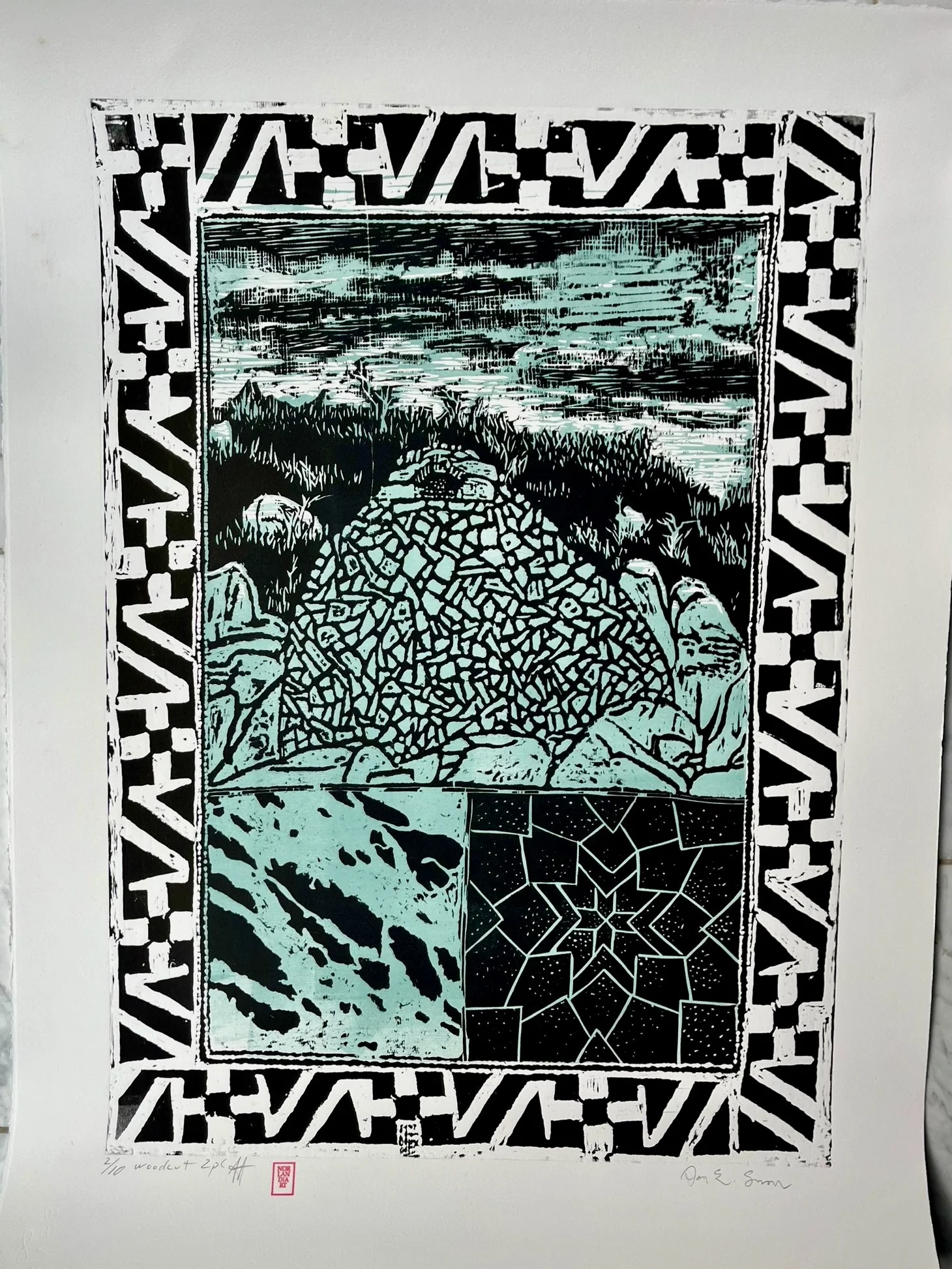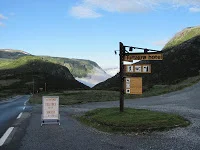The imagery I drew on for the woodcut depicted the recently built sculpture, a slate floor that I designed and laid for our host, and a bird's eye view of the surrounding islands. Bordering the three scenes was a pattern adapted from a rug in the cottage where we stayed. The print extended my relationship to the land art beyond the time I spent making it. And it was a purely personal artwork produced in a manner that harkened back to my earliest artistic strivings. Sometimes the best direction forward is discovered by going back.
Read MoreMaybe it comes from experience, or maybe it is innate, but I do have a nose for stone. Time and again I stumble upon obscure sources of loose stone if I just start wandering around. The talent, if it can be called that, extends to moments during the walling day when a particularly sized and shaped stone is required for a spot on the wall. Without it being in sight, I will ferret into a stock pile to immediately come up with the hidden gem, waiting just below the surface.
Read MoreThe 2017 work year was a variety-pack of projects and travels bringing rocks and people together. Projects from 2017 now lie nestled in snow, while projects for 2018 are already underway.
Read MoreA family is held together by those things that their members share with each other. The “giving away” increases the closeness between individuals and tightens the family bonds. Mutual respect grows when a balance of give and take circulates within the tribe.
Read MoreA week on Sørvær in Northern Norway kept me immersed in the land and enveloped by the sea. The atmosphere of this island among islands is reigned by the sky above and waters below. Combined, they create an undeniably powerful influence. My moods changed at the whim of the weather. Even though I’ve spent my adult life working outdoors I’m unconditioned to the reality of light reflected from a vast and shifting water surface, or, tides streaming in and out all around. Grasping the totality of the archipelago's grand and sweeping vistas was a heady experience.
Read MoreWhile the Northeast of the USA was sweltering, the weather in the Jotunheimen mountains of Norway was bracing. Cold winds and cloudy skies for the Turtagtrø dry stone walling workshop had me and the participants glad for some vigorous physical activity to stay warm. Of course, for the Norwegians it qualified as mild weather. As Morten gleefully pointed out, “If it’s not snowing, it must be summer!”
Read MoreEvery baker knows it takes good ingredients to make a tasty pie. Now that plans for the dry stone workshop at Turtagrø, Norway have come together, I can see that our week in July is going to be a fantastic time. We have a beautiful setting, excellent accommodations and an abundance of building stone. All that’s missing are a few more enthusiastic folks to sign up and meet us at Tutagrø. I hope you will be the one who completes the pie!
Read MoreGoing back through the year 2011 in my iPhoto files, I was drawn to those depicting family and friends, new and old. A collection of recollections dear to my heart. From maple sugaring season and projects at home in Vermont and New England, to travels in Finland, Newfoundland, Norway and Denmark, the fun began when we all got together.
Read MoreThe previous post elicited a question from a reader about the dry stone cairn in the top photo. It’s a trail marker, one of hundreds found alongside the old routes in Norway for crossing the high country from one valley community to another. They are spaced approximately 50 meters apart to help guide those traveling in fog, snow or low light conditions. The pine poles atop them may be all that’s visible in a sea of winter white.
Read MoreFrom the glacier fed streams of Norway’s Jotunheimen mountains, I’ve traveled this past week to the low, wetlands of Denmark. In fact, I’m living in a 300 year-old house alongside a castle moat. This is the artist’s residence for TICKON, the environmental art park I’ll be working in for the next month. Yesterday 20 tons of stone was gathered from field piles and delivered by the tractor-wagon load to the site of my construction. Today the outline of the work will be established and guide frames erected.
Read MoreContinuing on the subject of sculpture gardens, here’s a nice example I saw yesterday outside the Art Museum in Lillehammer, Norway. Created in 1992 by Bard Breivik, the sculptured garden is a cascade of stone and water. It begins serenely on flat ground at the height of the space. There, a screen of vertical granite slabs encloses a dry courtyard, a green lawn is bisected by a flagstone path, and the water course begins by spilling from a granite monolith into a long, stone trough. The water descends in multiple streams through a series of channels to a reflecting pool at the bottom of a steep rockery. Breivik’s sculptured garden is a good example of art that interprets nature without imitating it.
Read More









